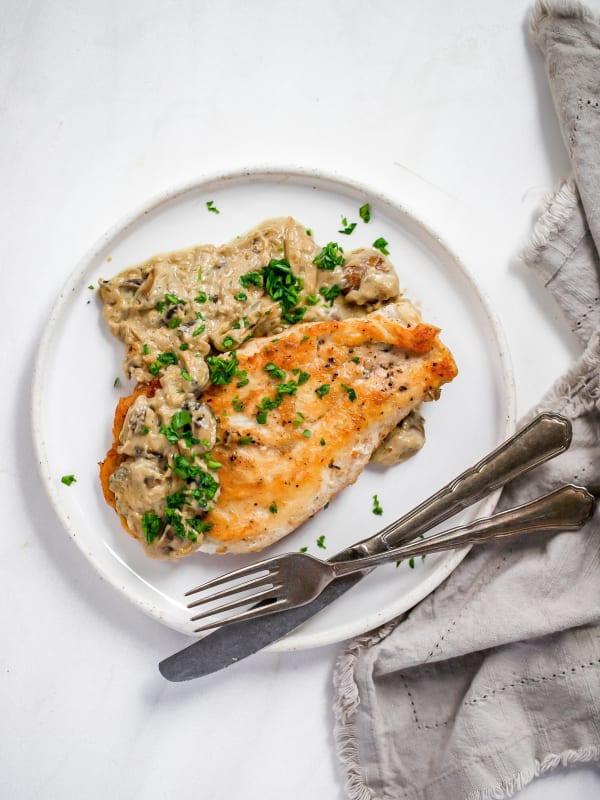Popular Conditions & Diets
Living well with lactose intolerance

Living well with lactose intolerance
Simple, gut-friendly swaps and nutrition tips for thriving with lactose intolerance.
Short read
Summary
Getting diagnosed with lactose intolerance can feel like a major lifestyle shift, but it doesn’t have to be. This feature explores what’s really happening in your body, how to identify your comfort zone, and practical ways to enjoy food again without the discomfort. From understanding digestion to finding nourishing dairy-free swaps and building gut health, this guide helps you create a balanced, feel-good relationship with food that supports your body and your lifestyle.
If you’ve just been told you’re lactose intolerant, it can feel like your entire relationship with food is about to change. Maybe you’ve been dealing with mysterious bloating or cramping after meals, or perhaps you finally pinpointed why that late-night ice cream run never ends well. Whatever led you here, take comfort in knowing this: lactose intolerance is incredibly common, and it doesn’t mean giving up the foods you love.
In fact, for many people, it’s less about strict elimination and more about understanding your body and making mindful swaps that support digestion, comfort, and nourishment. Let’s unpack what’s really happening in your gut and how to find your own dairy-free (or low-dairy) groove.
What’s Really Going On
Lactose intolerance happens when the body doesn’t produce enough lactase, the enzyme that breaks down lactose, the natural sugar in milk. Without enough lactase, lactose moves through your digestive system undigested, eventually fermenting in the colon. The result? Gas, bloating, and discomfort.
But it’s important to pause here: lactose intolerance isn’t an allergy, and it doesn’t mean you’re “bad” at digesting food. It’s simply a sign that your digestive system is evolving, something that happens to many adults around the world. In fact, about 65 per cent of people globally experience some level of lactose intolerance after childhood.


Step One: Redefine “Normal”
If you’ve been living with digestive discomfort for a while, it can be hard to remember what “normal” actually feels like. This is where curiosity becomes your best tool.
Try keeping a simple food and symptom journal for a week or two. Note what you eat, how you feel after, and the timing of any symptoms. Patterns often emerge quickly. For instance, you might notice that milk in your morning coffee causes discomfort, but aged cheddar on your sandwich doesn’t.
This gentle self-observation helps you identify your tolerance threshold, so you can build a flexible, personalized approach rather than cutting everything out cold turkey.
Step Two: Explore Smart Substitutes
The good news? There’s never been a better time to be dairy-free or low-dairy. Today’s grocery aisles are filled with options that cater to different tastes and nutritional needs. Lactose-free milk is real dairy milk with the lactose removed (thanks to added lactase enzymes), making it a great choice for people who enjoy the flavour and nutrients of cow’s milk.


Step Four: Keep It Balanced
Transitioning away from traditional dairy might mean thinking a little more consciously about key nutrients:
- Calcium: Found in fortified plant milks, leafy greens (like kale and bok choy), tofu, almonds, and sesame seeds.
- Vitamin D: Sunlight exposure helps, but many plant milks and cereals are also fortified.
- Protein: Dairy-free protein sources include beans, lentils, nuts, seeds, eggs, fish, and poultry.
Balance doesn’t mean perfection. It’s about variety, building meals that combine carbs, protein, and healthy fats to keep you energized and satisfied.
Step Five: Be Gentle With Yourself
Dietary changes can stir up emotions, especially when they touch the foods tied to comfort, culture, or routine. You’re not “failing” if you occasionally eat pizza with real cheese or forget to check an ingredient list. You’re simply learning what your body prefers.
Give yourself permission to adjust gradually. Celebrate small wins: like finding a new favourite oat milk or discovering that your digestion feels calmer after dinner. Over time, these moments build confidence and consistency.
If you liked this article, check out these other Rily features:
Dairy-Free & Delicious Recipes
If you’re easing into a lactose-free lifestyle, try these Rily favourites that prove “dairy-free” can still mean creamy, rich, and deeply satisfying:
- Creamy Plant-Based Cashew Alfredo: A silky, plant-based twist on comfort food.
- Lemon Poppyseed Chia Pudding: Breakfast that’s light, filling, and naturally dairy-free.
- Creamy Tahini Tomato Soup: Cozy and nourishing for gut health.
Tags:
Lactose Intolerant
,Lactose Intolerance
,Dairy-Free
,Vegan
,Food Sensitivity
,Gut Flora
,Gut-Brain Axis
,Gut Health
